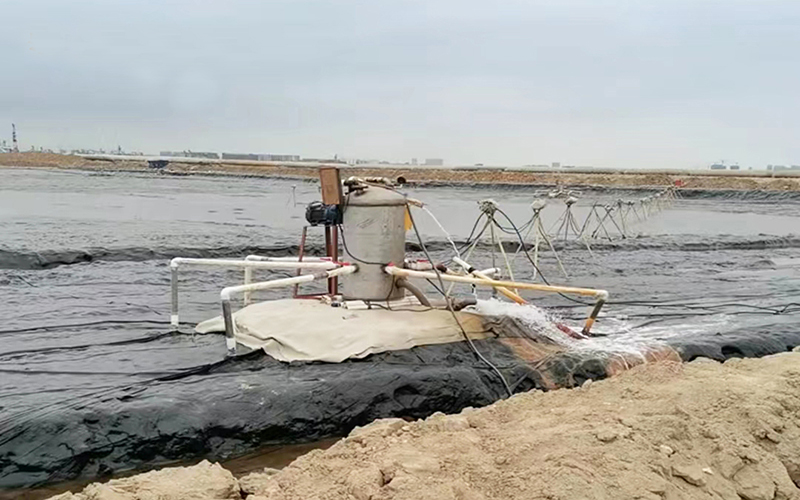Introduction and principle of vacuum preloading drainage consolidation method construction technology
Vacuum preloading drainage method is a soft soil foundation reinforcement treatment technology, belonging to a type of drainage consolidation method.

Vacuum preloading is the process of laying a layer of sand cushion on the surface of a soft soil foundation that needs to be reinforced, then laying a vertical drainage pipeline (plastic drainage board), and then using an impermeable sealing film to isolate it from the atmosphere. The end of the sealing film is buried and compressed. Through the drainage pipeline buried in the sand cushion, a vacuum pump or other vacuum means are used to vacuum, and a negative pressure (relative to atmospheric pressure) is formed by vacuuming under the membrane, The negative pressure is transmitted downwards along the vertical drainage channel (plastic drainage board), and the unequal pressure state between the soil and the vertical drainage channel causes the negative pressure to be transmitted to the soil. Under the negative pressure, pore water gradually seeps into the vertical drainage channel, achieving the effect of soil drainage consolidation and strength growth, increasing the effective stress of the foundation, causing consolidation of the soil, reducing later settlement, and improving the bearing capacity of the foundation.
The construction content mainly consists of four parts:
(1) Construct a vertical and horizontal drainage channel, that is, construct plastic drainage boards and sand cushion layers;
(2) To construct an airtight sealing layer that isolates the reinforced foundation from the atmosphere;
(3) We need to set up a high-efficiency vacuum pumping device. Laying main pipes and filter pipe networks inside the sand cushion layer and installing vacuum pumps and other equipment outside the sealing system;
(4) A testing system should be set up to ensure that construction can be carried out according to design requirements.
The construction process of vacuum preloading method is as follows:
Measurement and setting out → site leveling → laying sand cushion layer → laying plastic drainage board → laying main and branch filter drainage pipes → laying geotextile sealing film → constructing sealing ditch → setting measurement marks → installing vacuum pump → vacuum preloading → settlement observation and monitoring
The efficiency of vacuum equipment directly affects the preloading effect, so it is required that the vacuum equipment has high vacuum efficiency, can adapt to continuous operation, is lightweight, has a simple structure, and is easy to maintain.
The number of vacuum pumps should be determined according to the design requirements. Based on past experience, reinforcement of muddy soil and muddy formations should achieve a vacuum degree of 80KPa under the membrane. A 5.5KW~7.5KW centrifugal pump should be used, and each pump can extract an area of 1000-1500m2. About 5-7 days (some require only 24 hours) can achieve a predetermined vacuum degree of over 80KPa. When the vacuum degree stabilizes above 80KPa, the number of pumps can be reduced as appropriate to save electricity. But it is necessary to ensure stability at the vacuum level required by the design.
The installation time of the vacuum pump can be carried out simultaneously with the trenching and film laying. After the installation of the main film outlet device, a steel wire rubber hose is connected to the vacuum pump, and the connection area is tightly tied with 10 # iron wire to prevent air leakage. Two valves are installed in the middle of the hose, one is a check valve and the other is a shut-off valve. When repairing the vacuum pumping equipment, the shut-off valve should be closed to avoid a rapid decrease in the vacuum degree under the membrane.
Vacuum preloading, as a mature technology for soft foundation reinforcement, is widely used in engineering construction such as ports, docks, airports, industrial and civil buildings due to its advantages of short construction period, safe construction, pollution-free environment, and low cost.
Mainly suitable for foundation treatment in soft soil areas, it is widely used in coastal areas of China, such as Zhejiang, Guangdong, Jiangsu, and Shanghai. It is an economically reasonable construction method for soft soil foundation treatment.

